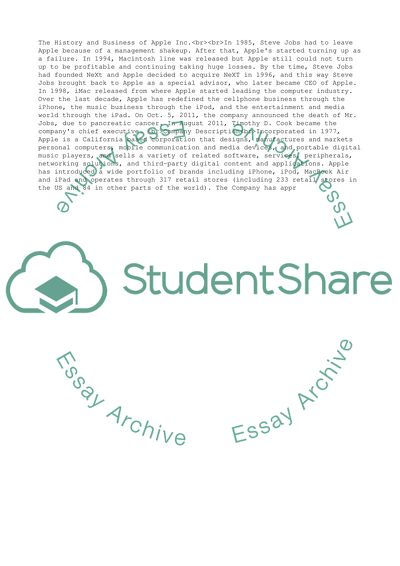Cite this document
(“The History and Business of Apple Inc Assignment”, n.d.)
Retrieved de https://studentshare.org/business/1392378-apple-inc
Retrieved de https://studentshare.org/business/1392378-apple-inc
(The History and Business of Apple Inc Assignment)
https://studentshare.org/business/1392378-apple-inc.
https://studentshare.org/business/1392378-apple-inc.
“The History and Business of Apple Inc Assignment”, n.d. https://studentshare.org/business/1392378-apple-inc.


